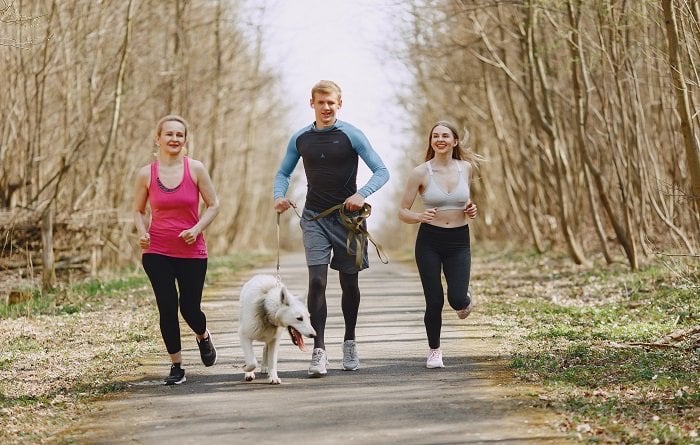
Jogging regularly is among the best ways to keep in shape. It strengthens your legs, burns fat, and helps you maintain a healthy, regular heart rate. It can be a meditative solo pursuit or an enjoyable social activity.
Warming Down Safely After a Run
But many people assume that you don’t have to warm down as you do with running because it’s not as intense. We’re here to tell you to think twice about that. Warming down prevents your muscles from cramping and helps you get on with your day in comfort, even if you’re doing a light jog.
Not sure how to make the most of a warm down? Here are five tips to try on your next jog.
1. Have Proper Aftercare Ready
You’ve heard of ice baths and spa treatments after exercise – most of us don’t need to get so extreme. Many products are available that help treat soreness and strained muscles after exercise, such as CBG Muscle Frost Pain Relief. High-quality aftercare products can ease tired or sore limbs – this is especially useful if you like to jog in the mornings.
CBG is especially popular in athletic aftercare products because it can also help provide pain relief for more serious sprains. Muscle treatments are an essential part of any athlete’s kit.
2. Don’t Stop Moving Right Away
It can be tempting to stop running once your reach the “finish line” in your head. This might be the second lap of your local park or your starting point on a 10k round course. We all have goals when we go jogging, and meeting them is satisfying. However, remember that exercising safely doesn’t stop there.
If you have a short walk home from wherever you exercise, this is a great place to start. Even a gentle walk gives you time to keep easing the lactic acid from your muscles by keeping them moving.
If you drive or take public transport to wherever you jog, it’s a good idea to walk or gently jog an extra half-mile before you stop moving. Going straight from hot to cold will result in cramps and potentially tears in your muscles.
3. Stretch After Running
As you do your warm-up before exercise, it’s good practice to stretch thoroughly. You should also do this during your warm-down. Again, this helps reduce lactic acid build-up in your muscles and reduces soreness.
Stretching also helps to develop muscle. Remember that it’s not just your legs you exercise when you’re jogging – muscles in your arms and back are also being worked. They need stretching before and after you jog.
4. Take Some Time Before Eating
We all know that it’s a good idea to jog on an empty stomach. Food can make you feel sluggish, and jogging after eating causes indigestion. This often means that after burning some calories on a run, you’ll feel quite hungry.
Try to leave at least 30 minutes between finishing exercise and eating. This lets your stomach relax – you’ll have been tensing your abdominal muscles while jogging, which won’t help you digest food afterward. Give it 30 minutes to an hour before eating something light, healthy, and rich in protein.
5. Drink Fluids – But Not Too Much
Staying hydrated when you jog is so important, especially if the weather is hot. Never be a hero for the sake of your run – stop and drink some water at regular intervals.
However, be careful not to waterlog yourself. Glugging down a full bottle of water might feel good for a moment, but it’ll sit in your stomach and feel very uncomfortable if you keep running. Smaller sips let you process fluids efficiently and maintain an even body temperature.
Wrap-Up
Easing yourself out of a jog is the best way to prevent discomfort and potentially harmful muscle tears. With a proper aftercare routine, we guarantee that you’ll be ready to get on with the rest of your day.
Photo by cottonbro
Photo by Gustavo Fring

